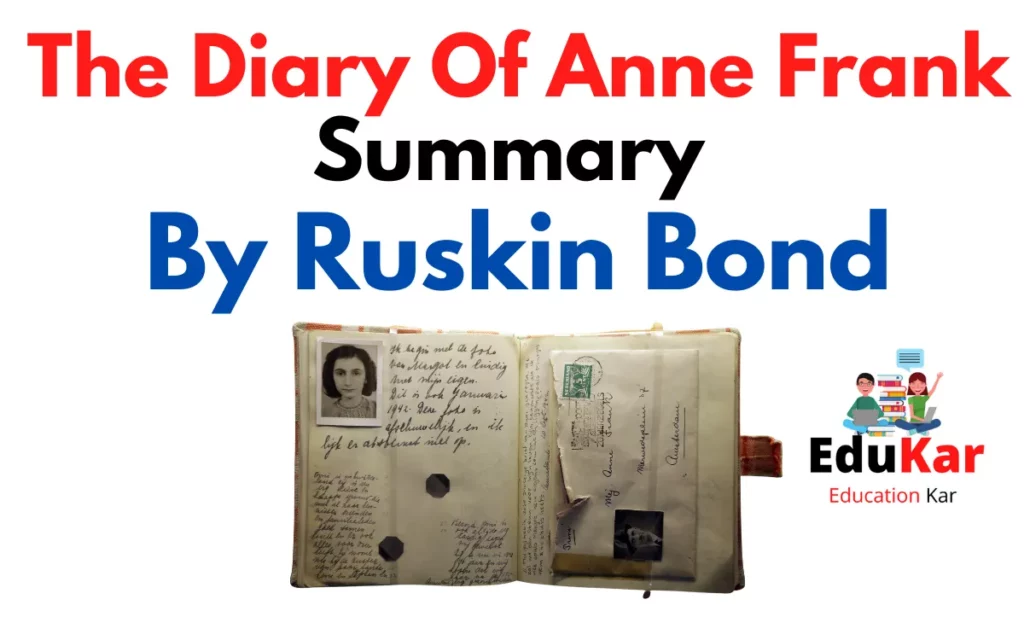Contents

| Name | Mother Day |
| Type | Summary |
| Class | 11 |
| Board | CBSE Board |
| Author | J. B. Priestley |
Introduction
“Mother’s Day” is a heartwarming story by J.B. Priestley that portrays the unconditional love of a mother and the importance of respecting and appreciating her. Through the story of Mrs. Pearson and her family’s transformation, the author emphasizes the need for children to value their mothers and treat them with kindness and respect. The story is a reminder to all of us about the selfless love and sacrifices made by our mothers, and the need to show them gratitude and love not just on Mother’s Day but every day.
Character Of Mother’s Day
- Mrs. Pearson – She is the protagonist of the story and a mother of two children, Cyril and Doris. Mrs. Pearson is depicted as a loving and caring mother who is constantly mistreated and disrespected by her family. However, she undergoes a transformation through the help of Mrs. Fitzgerald, a fortune teller, and teaches her family an important lesson about the value of a mother’s love.
- Cyril – He is Mrs. Pearson’s son and is depicted as a selfish and arrogant individual who treats his mother with disdain and disrespect. Cyril is the typical example of a disrespectful child who takes his mother for granted and expects her to serve him without showing any gratitude.
- Doris – She is Mrs. Pearson’s daughter and is also portrayed as a rude and ungrateful child who belittles her mother’s efforts and sacrifices. Doris is depicted as a self-centered individual who only cares about her own needs and desires, without considering her mother’s feelings.
- George Pearson – He is Mrs. Pearson’s husband and is shown as a neglectful and indifferent husband who turns a blind eye to his wife’s suffering. George is a classic example of a husband who fails to appreciate and respect his wife’s sacrifices and contributions to the family.
- Mrs. Fitzgerald – She is a fortune teller who plays a pivotal role in the story. Mrs. Fitzgerald uses her magical powers to help Mrs. Pearson teach her family an important lesson about the value of a mother’s love. Although she is portrayed as a manipulative and somewhat sinister character, she helps Mrs. Pearson bring about a positive change in her family’s behavior.
Watch Mother’s Day Summary
Mother’s Day-Short Summary
“Mother’s Day” by J.B. Priestley is a short story about a mother named Mrs. Pearson who is mistreated and disrespected by her own family. She is treated as a servant, and her children and husband don’t appreciate all that she does for them. One day, she meets a fortune teller named Mrs. Fitzgerald who offers to switch personalities with her in order to teach her family a lesson.
Mrs. Pearson agrees to the switch, and she becomes Mrs. Fitzgerald while Mrs. Fitzgerald becomes Mrs. Pearson. As Mrs. Fitzgerald, Mrs. Pearson begins to smoke and drink while also taking on a carefree attitude. She refuses to iron her daughter’s dress and tells her son to make his own tea. Meanwhile, Mrs. Fitzgerald, who is now in Mrs. Pearson’s body, takes on the role of a housewife and serves the family.
Despite the switch, Mrs. Pearson’s family continues to treat her with disrespect and ignorance. Her son Cyril comes home from school and immediately asks if his tea is ready, while her daughter Doris asks her to iron her dress for a date with her boyfriend. Mrs. Pearson refuses to do either of these things, which angers her children. However, Mrs. Fitzgerald as Mrs. Pearson reminds them to be polite and watch their language.
Mrs. Pearson, as Mrs. Fitzgerald, continues to act carefree and selfish, refusing to do housework and demanding that her family treat her with more respect. She decides to take weekends off to spend time with her friends and makes it clear that everyone in the household must contribute equally.
When her husband George comes home, he is shocked to see his wife smoking and drinking. He protests and tells her that he is spending time with people who are making fun of him behind his back rather than with her. Mrs. Fitzgerald, in Mrs. Pearson’s body, stands her ground and reminds him that she deserves to be treated with respect.
At last, Mrs. Fitzgerald reveals herself and teaches the family a valuable lesson about honoring and loving their mother. As a result, the family begins to treat Mrs. Pearson with the love and respect she deserves. They realize that they had taken her for granted and make a promise to never treat her like a servant again.
Mother’s Day-Long Summary
The story of a mother named Mrs. Pearson is described in the chapter. Her children regularly treat her with rudeness and disregard. She was treated like a slave even in her own house. She consequently experienced daily ignorance and humiliation from her son Cyril and daughter Doris as well as from her husband George Pearson, who had completely turned a blind eye to his wife.
When Mrs. Pearson meets Mrs. Fitzgerald, a fortune teller, and talks about her family and their bad behaviour, her life takes a turn. She reveals every detail of her family’s behaviour to Mrs. Fitzgerald. Additionally, Mrs. Fitzgerald, who has a powerful and evil personality, suggests that she swap personalities. In order to impart a useful lesson on her family. Mrs. Pearson initially objected, but after some pushing, she decided to trade bodies.
Later that, Mrs. Fitzgerald uses magic to switch personalities with Mrs. Pearson. They instantly change personalities, and Mrs. Pearson, who was previously cool and collected, starts smoking and drinking. And now Mrs. Fitzgerald is doing nothing.
Mrs. Pearson is now inside her house as the scene shifts, and Doris comes inside. Given that she has a date with her boyfriend Charlie Spence, she provides the woman a dress and asks her to iron it. She even takes issue with her mother’s smoking. Mrs. Pearson responds angrily when she requests and suggests that she complete her job on her own. She also jokes around with her beau. After her mother taunts and corrects her, Doris feels unhappy and ashamed and breaks down in tears.
After that, her son Cyril comes in and quickly inquires as to whether his tea is ready. Mrs. Pearson declines and suggests he make it himself. He raises his voice when he notices her mother’s expression and her sister’s tears. Additionally, he refers to Mrs. Fitzgerald as an “old hag,” to which Mrs. Pearson advises him to watch his words.
when children complain of being tired after school. She is very clear in telling them both that starting on that day, everyone will work equally. Additionally, she will spend the weekends with her buddies rather than working.
When Mr. Pearson arrives home at that point, he expresses amazement at seeing her wife smoking and drinking. He protests to Mrs. Pearson convincing him that she can drink just as much as he can. Furthermore, he tells him that he is spending time with people who are making fun of him behind his back rather than with her wife.
When Mrs. Pearson witnesses Mrs. Fitzgerald insulting her family, she requests her to stop. She doesn’t allow her to speak, though, until she imparts to them all a valuable lesson about honouring and loving their mothers. They quickly flip personalities once more. The son, daughter, and husband then start helping their mother and wife after learning their lesson.
Mother’s Day-Theme
The theme of “Mother’s Day” by J. B. Priestley is the importance of appreciating and valuing the role of a mother in the family. The story highlights the neglect and mistreatment of the mother character, Mrs. Pearson, by her family members, who take her for granted and fail to acknowledge her sacrifices and hard work. Through the character of Mrs. Fitzgerald, the story also explores the consequences of neglecting one’s responsibilities and the dangers of seeking easy solutions to complex problems.
Mother’s Day important MCQ
Mother’s Day Class 11 Summary MCQ
About The Author
Summary of Mother’s Day: J. B. Priestley wrote the drama Mother’s Day. It is a satirical and hilarious portrayal of the position of women, particularly housewives, in families.
Mother’s Day MCQ
Mother’s Day Class 11 Summary MCQ
Conclusion
In conclusion, “Mother’s Day” is a powerful story that highlights the significance of a mother’s love and the need for children to value and respect their mothers. Through the character of Mrs. Pearson and her family’s transformation, J.B. Priestley conveys the message that it is essential to appreciate and honor the sacrifices and selfless love of our mothers. The story is a beautiful reminder that our mothers are the pillars of strength in our lives, and we should express our love and gratitude to them not just on Mother’s Day but every day. Let us cherish and celebrate our mothers and make them feel loved and appreciated, for they truly deserve it.
FAQs on Mother’s day summary
What is “Mother’s Day” by J. B. Priestley about?
“Mother’s Day” is a short story by J. B. Priestley. It is about a family’s celebration of Mother’s Day and the reflections of each family member on their relationship with their mother.
Who are the characters in “Mother’s Day”?
The characters in “Mother’s Day” include the mother, the father, their two grown-up children, and their spouses.
What is the theme of “Mother’s Day”?
The theme of “Mother’s Day” is the complexity of family relationships and the different ways that people view and understand their mothers. The story explores the different perspectives and memories of the family members, and how they are shaped by their experiences and emotions.
What is the significance of Mother’s Day in the story?
Mother’s Day serves as a catalyst for the family members to reflect on their relationships with their mother and to express their feelings and emotions. It also serves as a reminder of the importance of motherhood and the role of mothers in shaping the lives of their children.
How does the story end?
The story ends with the family members coming together to celebrate Mother’s Day and expressing their love and appreciation for their mother. They also reflect on the lessons they have learned from her and the ways in which she has influenced their lives.
What is the style of writing used by J. B. Priestley in this story?
J. B. Priestley’s style of writing in this story is reflective, introspective, and contemplative. The story is written in a first-person point of view, and the characters often reflect on their emotions and feelings, and their experiences and memories.

![Grandma Climbs A Tree Summary [Class 10] By Ruskin Bond Grandma Climbs A Tree Summary](https://edukar.org/wp-content/uploads/2022/09/Grandma-Climbs-A-Tree-Summary-1024x597.webp)













